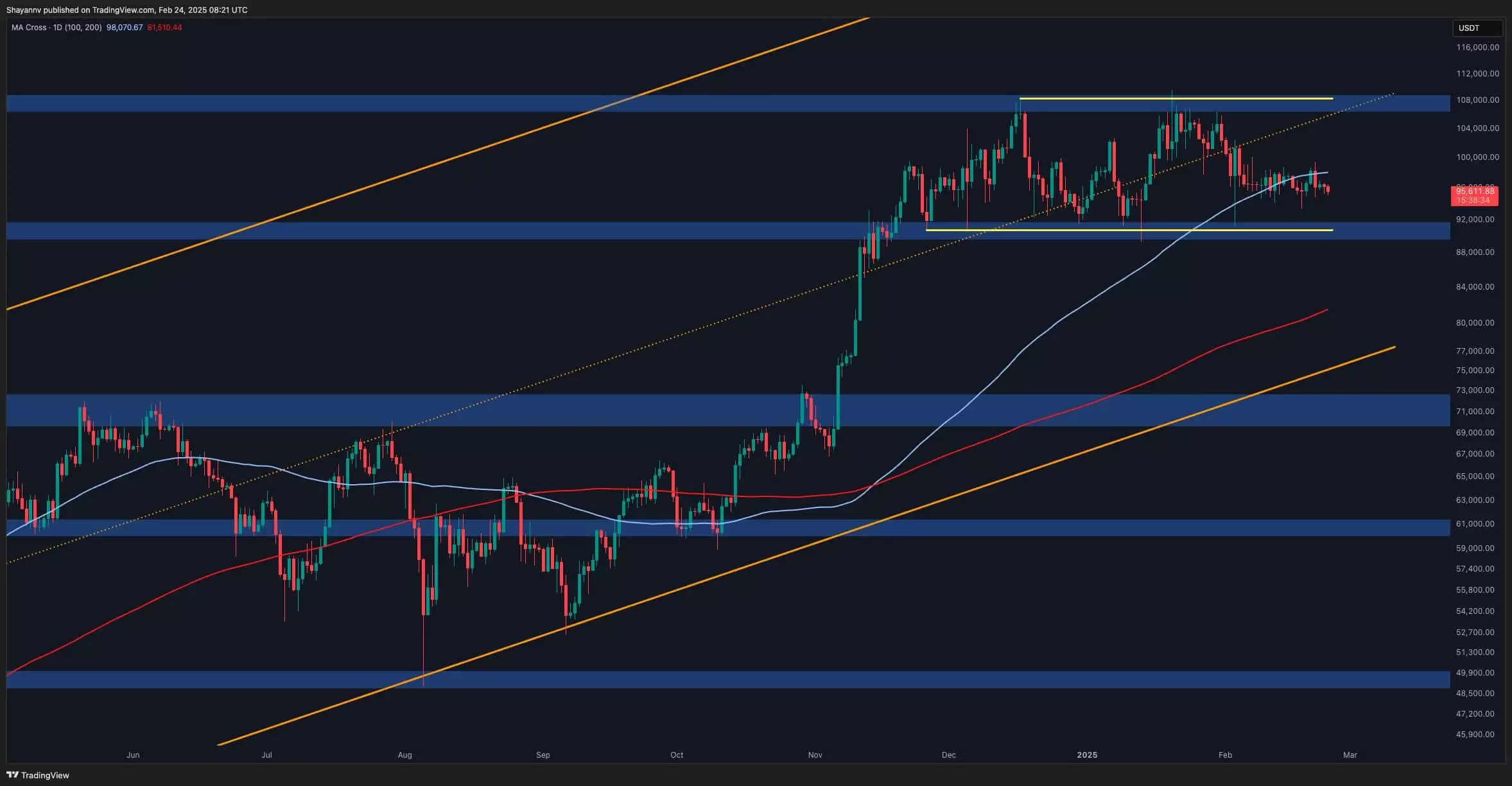Bitcoin’s recent movement has garnered significant attention as it slips beneath the 100-day moving average, currently set at $98,000. This shift raises concerns about a weakening bullish outlook as traders eye the critical $95,000 support level. Although the price is facing downward pressure, the absence of robust trading volume indicates a lack of decisive market movement. The current trend appears stagnant, with neither buyers nor sellers exerting control over the market direction.
As Bitcoin approaches its pivotal $90,000 support zone, analysts observe that two potential scenarios may unfold. The first scenario involves a rebound triggered by the accumulation of buyers within this historically significant demand zone. The $90,000 level has acted as support in previous market cycles, suggesting that a bounce back here could reignite bullish sentiment. Alternatively, technical analysis indicates that Bitcoin may be forming a double-top pattern; should it break below this neckline, the price could see a significant downturn, effectively confirming a bearish trend and leading to further declines.
In the immediate short term, Bitcoin’s price behavior around this $90,000 level will be a key indicator of future directions. If the price actions lead to a break below this zone, it would mark a serious shift in market sentiment, potentially unleashing downward momentum that many traders might be anxious to avoid.
Market sentiment is in flux, heavily influenced by external factors such as geopolitical tensions and changes in economic policy. The aftermath of recent political events, including Trump’s election victory, gave rise to initial optimism and hope for strategic investment maneuvering in the U.S. However, ongoing trade conflicts and economic uncertainties have prompted a more risk-averse attitude among investors. This environment of hesitation has resulted in lowered market momentum, which Bitcoin seems to be reflecting.
Essentially, without the resolution of these prevailing uncertainties or the introduction of new positive catalysts, the market may struggle to establish a solid upward trajectory. Moreover, an examination of on-chain data uncovers declining activity levels, with fewer active addresses and transactions, suggesting a potential period of investor fatigue. Such declines can mirror patterns from previous market peaks in 2017 and 2021, where enthusiasm waned following significant rallies.
Navigating the short-term landscape of Bitcoin’s price is increasingly complex. A revival in market confidence could propel Bitcoin back into a bullish trend, particularly if emerging macroeconomic catalysts invigorate investor interest. Conversely, should current uncertainties persist, the likelihood of another extended phase of stagnation looms, reminiscent of early 2024. As traders and investors alike brace themselves for what lies ahead, careful monitoring of the $90,000 support level will be essential, serving as a bellwether for Bitcoin’s short-term price trajectory and long-term market health.















